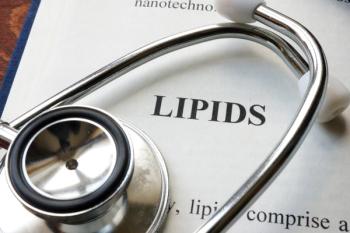
- Consultant for Pediatricians Vol 5 No 12
- Volume 5
- Issue 12
New Study on SIDS Underscores Need to Improve Anticipatory Guidance to All New Parents
Lately, the media has been riddled with news about a recent study pertaining to brainstem abnormalities in sudden infant death syndrome (SIDS). How pertinent are the findings to your everyday practice? Should this study change the anticipatory guidance that you provide to new parents?
What are the risk factors for SIDS--and how should I counsel new parents about reducing the risk?
Lately, the media has been riddled with news about a recent study pertaining to brainstem abnormalities in sudden infant death syndrome (SIDS). You may already be hearing questions about it from parents or other physicians. How pertinent are the findings to your everyday practice? Should this study change the anticipatory guidance that you provide to new parents?
Paterson and colleagues1 examined the medullae of infants who had died of SIDS and those who had died of other causes between 1997 and 2005 in San Diego. They looked at the number of serotonin neurons and serotonin receptor binding sites in areas of the medulla and found some differences between the 2 groups of infants. This is significant because the serotonergic system of the medulla is believed to play an important role in respiratory drive and arousal as well as in other homeostatic mechanisms.
The authors believe in a "triple risk model" that results in sudden infant death. They feel that SIDS occurs when:
There is an underlying biologic vulnerability.
External stressors are present.
The infant is in a period of critical development.
The authors propose that the differences between the serotonergic systems of infants who died of SIDS and those who died of other causes form the basis for the "underlying vulnerability" arm of the triple risk model. They suggest that when a biologically vulnerable infant is in the critical development period (which they define as age less than 6 months old), he or she is more susceptible to external stressors (such as sleeping in the prone position).
Of the 31 infants who had died of SIDS, 87% were found to have both serotonin abnormalities in the medulla as well as external stressors. External stressors included such factors as prone or side sleeping, face-down sleeping, bed sharing, and a history of a minor illness within 1 week of death. The serotonin abnormalities were found to be significantly greater in infants who had succumbed to SIDS than in the controls. Furthermore, differences were found between male and female cases, which could be a contributing factor to the increased vulnerability to SIDS among boys.
The study is limited by several factors including the small number of patients and the fact that the authors were unable to study all of the serotonin markers in all cases. In an accompanying editorial, Dr Weese-Mayer also comments on the limited racial diversity of the infants.2
Despite these limitations, however, this study calls attention to the idea that some infants may inherently be at a higher risk for SIDS. If this is the case, the potential exists to identify these infants early on--and to alter the additional risk factors they face. Until this is a possibility, we need to improve the anticipatory guidance we are offering to all new parents.
It is well established that prone and side sleeping are not as safe as supine sleeping. Furthermore, Ostfeld and colleagues3 recently found that bed sharing was associated with additional sleep-environment and sleep-position risks. To reduce the incidence of SIDS, we need to stress the importance of the Back to Sleep campaign4 during our interactions with parents and to emphasize the dangers of bed sharing.
References:
REFERENCES:
1. Paterson DS, Trachtenberg FL, Thompson EG, et al. Multiple serotonergic brainstem abnormalities in sudden infant death syndrome.
JAMA.
2006;296: 2124-2132.
2. Weese-Mayer DE. Sudden infant death syndrome: is serotonin the key factor?
JAMA.
2006;296:2143-2144.
3. Ostfeld BM, Perl H, Esposito L, et al. Sleep environment, positional, lifestyle, and demographic characteristics associated with bed sharing in sudden infant death syndrome cases: a population-based study.
Pediatrics.
2006;118:2051-2059.
4.National Institutes of Health.SIDS: "Back to Sleep" campaign. Available at:
http://www.nichd.nih.gov/sids/.
Accessed November 16, 2006.
Articles in this issue
almost 19 years ago
Rapid Diagnostic Testing for Influenza: When Does It Make Sense?almost 19 years ago
6-Year-Old Girl With Marks on Neckalmost 19 years ago
Parents Do Listenalmost 19 years ago
Tinea Capitis and Tinea Corporisalmost 19 years ago
Tinea Corporisalmost 19 years ago
Photoclinic: Langerhans Cell Histiocytosisalmost 19 years ago
What Caused This Skin Eruption?almost 19 years ago
Case in Point: Heart Block as the Presenting Symptom of Lyme Diseasealmost 19 years ago
Diagnostic Tips, Initial Management Strategiesalmost 19 years ago
Case in Point: Young Girl With Pruritic, Coin-Shaped LesionsNewsletter
Access practical, evidence-based guidance to support better care for our youngest patients. Join our email list for the latest clinical updates.














